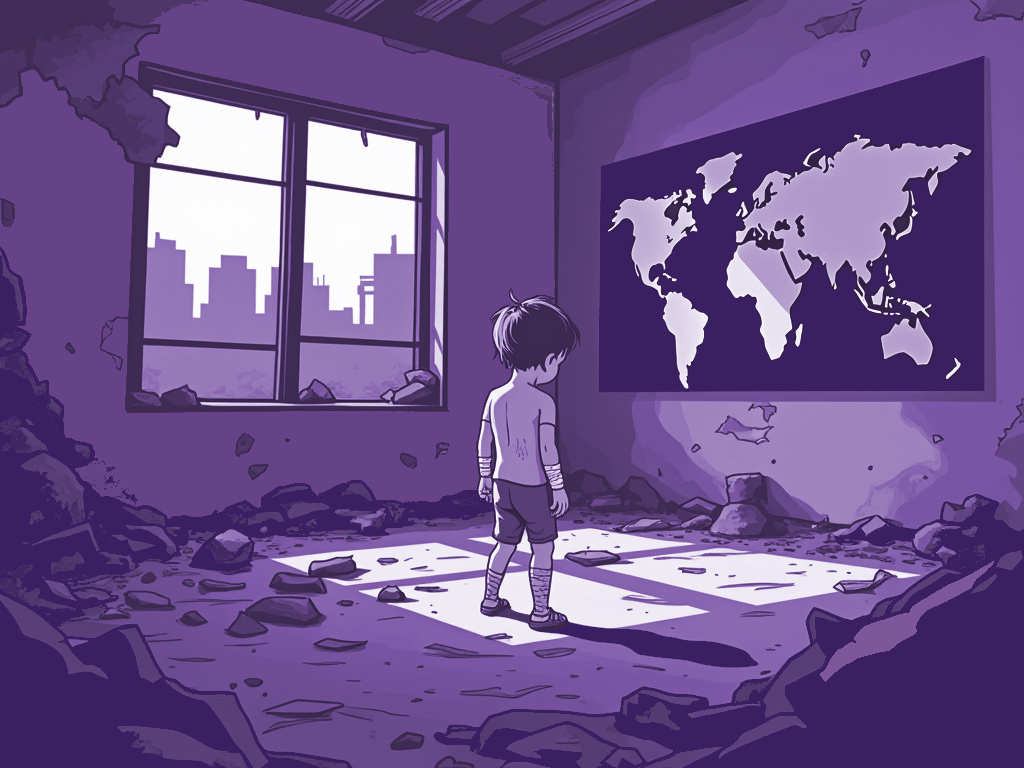Violence in the World

In a world where our hopes and aspirations often revolve around progress and prosperity, an unsettling and pervasive issue that often remains hidden in the shadows – violence against children. It's a topic we can't afford to ignore, one that touches the lives of our most vulnerable members and implores us to safeguard their rights and safety.
Defining Violence
“Violence” is understood to mean “all forms of physical or mental aggression, injury or abuse, neglect or negligent treatment, maltreatment or exploitation, including sexual abuse” (Convention on the Rights of the Child, 2011).
Nearly three decades ago, in 1997, the World Health Organization (WHO) identified violence as a global public health concern and a priority for prevention. Today, its shadow looms over every corner of the world, sparing no society or child from its grasp.
All forms of violence against children, from parental discipline involving physical punishment to unwanted sexual advances, are not only morally indefensible but also a fundamental violation of every child's human rights. One significant reason that violence against children often remains hidden is the reluctance of many victims to disclose their abuse, seek assistance to cope with their experiences, or take action to protect themselves from further victimization.
Statistics
- Globally, over 1.1 billion caregivers, or more than one in four, believe in the necessity of physical punishment as a form of discipline.
- Only 9% of children under the age of 5 live in countries where corporal punishment at home is entirely prohibited, leaving approximately 607 million young children without comprehensive legal protection.
- Every 7 minutes, a teenager loses their life to violent acts around the world.
Countries that Prohibit all Corporal Punishment of Children, Including at Home:
| Year | Country |
|---|---|
| 2020 | Japan, Seychelles |
| 2019 | Georgia, South Africa, France, Republic of Kosovo |
| 2018 | Nepal |
| 2017 | Lithuania |
| 2016 | Mongolia, Montenegro, Paraguay, Slovenia |
| 2015 | Benin, Ireland, Peru |
| 2014 | Andorra, Estonia, Nicaragua, San Marino, Argentina, Bolivia, Brazil, Malta |
| 2013 | Cabo verde, Honduras, North Macedonia |
| 2011 | South Sudan |
| 2010 | Albania, Congo, Kenya, Tunisia, Poland |
| 2008 | Liechtenstein, Luxembourg, Republic of Moldova, Costa Rica |
| 2007 | Togo, Spain, Venezuela, Uruguay, Portugal, New Zeland, Netherlands |
| 2006 | Greece |
| 2005 | Hungary |
| 2004 | Romania, Ukraine |
| 2003 | Iceland |
| 2002 | Turkmenistan |
| 2000 | Gemany, Israel,Bulgaria |
| 1999 | Croatia |
| 1998 | Latvia |
| 1997 | Denmark |
| 1994 | Cyprus |
| 1989 | Austria |
| 1987 | Norway |
| 1983 | Finland |
| 1979 | Sweden |
Source: End Corporal Punishment
Global Progress and Ongoing Challenges
Meanwhile, the most perilous places for adolescent boys and girls span continents, encompassing countries like the Syrian Arab Republic, Iraq, Afghanistan, and South Sudan topping the list.
Equally astonishing is the fact that merely 60 countries worldwide have implemented laws that comprehensively prohibit the use of corporal punishment at home, thereby leaving over 600 million children under the age of 5 without the shield of full legal protection.
Conversely, in 15 states, corporal punishment is not fully prohibited in any setting, including as a sentence for crime: These countries are Barbados; Botswana; Brunei Darussalam; Dominica; Malaysia; Maldives; Mauritania; Nigeria; Pakistan; Saudi Arabia; Singapore; Somalia; State of Palestine; Tuvalu; UR Tanzania.
Meanwhile, educational institutions, entrusted with providing a secure environment for children to learn and flourish, lag in implementing laws to prohibit violence. Shockingly, around 732 million school-age children, comprising half of the global population aged 6 to 17, reside in countries where they lack legal protection from corporal punishment in school.
Violence against children is often rationalized as necessary or unavoidable. Children's familiarity with the perpetrators, the underestimation of violence's harmful effects, and the fear of retribution contribute to underreporting. This culture of impunity and prolonged exposure to violence can normalize it in the eyes of victims, making prevention and intervention all the more challenging. Nonetheless, comprehensive data collection on all forms of violence remains the crucial first step in addressing this deeply ingrained issue.
The question remains: Can we truly put an end to child violence worldwide?
Every child has the inherent right to be shielded from violence, regardless of whether it comes from parents, teachers, friends, romantic partners, or strangers. All forms of violence against children, regardless of their nature or severity, inflict harm. Protection extends not only to caring for children who are victims of violence but also to preventing any act of violence against each child.
The prevention of violence against children is a shared responsibility, one that falls upon each of us. It's a duty to safeguard the most precious members of our global family. Together, we can work towards ending the silent epidemic and creating a world where every child can grow up free from violence, fear, and harm.

